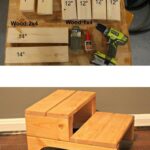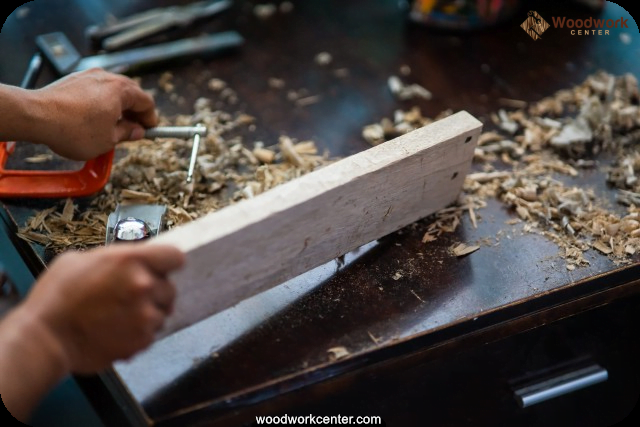Woodworking is a craft that requires precision, attention to detail, and a deep understanding of the materials being used. One tool that can greatly enhance these qualities is the workshop jig. Whether you are a beginner or an expert woodworker, workshop jigs are a must-have in your arsenal. In this article, we will explore why workshop jigs are essential for woodworking success and delve into the various types available.
But first, what exactly are workshop jigs? Workshop jigs are specialized tools designed to assist woodworkers in achieving accurate cuts, angles, and shapes consistently. They act as guides and templates during the construction process, ensuring that each piece fits together perfectly. From simple devices like miter sleds and tapering jigs to more complex tools like dovetail jigs and router templates, there is a wide range of workshop jigs available to suit different woodworking tasks.
Using workshop jigs has numerous benefits that improve not only the accuracy of your work but also your efficiency and safety. These tools eliminate the need for guesswork by providing precise measurements and guiding your hand movements. They allow you to repeat successful cuts or designs with ease, saving time and reducing errors. Additionally, workshop jigs hold the workpiece securely in place during cutting or shaping, reducing the risk of accidents or injuries.
In the following sections of this article, we will delve deeper into different aspects of workshop jigs – from beginner-friendly options to advanced tools for expert woodworkers. We will also explore DIY alternatives for those on a budget and provide recommendations for top workshop jigs every serious woodworker should consider. So whether you’re just starting out or looking to take your craft to the next level, incorporating workshop jigs into your woodworking practice will undoubtedly enhance precision and creativity.
Define Workshop Jigs
A workshop jig is a tool or device used in woodworking to assist in achieving precise and accurate cuts, shapes, and angles. It acts as a guide, helping woodworkers to replicate the same cut or shape multiple times with consistency. Jigs are often custom-made or purchased separately to fit specific woodworking tasks and can be used in various applications, such as cutting, drilling, shaping, and joining.
There are different types of workshop jigs available depending on the specific task they are designed for. One common type is the crosscut sled jig, which is used on table saws to make accurate and straight crosscuts repeatedly. This jig consists of a wooden base with two runners that fit into the miter slots of the table saw. It also features a fence at one end that can be adjusted for different angles or widths of cuts.
Another popular type of jig is the dovetail jig, which helps woodworkers create precise dovetails when constructing drawers or boxes. This jig holds the workpiece securely while guiding a router along its predetermined pattern, resulting in consistently spaced and accurately cut dovetail joints.
In addition to cutting jigs, there are also numerous clamping and holding jigs that assist woodworkers in keeping their workpieces stable during various operations. These jigs ensure safety by reducing movement and potential hazards when using power tools such as routers, sanders, or drills.
Overall, understanding the basics of workshop jigs is crucial for every woodworker who wants to achieve precision and accuracy in their projects. Whether it’s a simple homemade jig or a complex commercial one, these devices help streamline woodworking tasks while ensuring consistent results every time.
The Benefits of Using Workshop Jigs
Workshop jigs are an essential tool for woodworkers of all levels. They offer a range of benefits that greatly improve accuracy, efficiency, and safety in woodworking projects. By understanding these benefits, woodworkers can make the most out of their jigs and enhance their overall woodworking experience.
One of the primary advantages of using workshop jigs is improved accuracy. Jigs are designed to hold workpieces in place, ensuring precise and consistent cuts or drilling. The use of a jig eliminates the need for measurements and markings during each cut, resulting in cleaner and more accurate results. Additionally, workshop jigs often include guides or templates that help woodworkers achieve specific angles or shapes with ease.
Another benefit of workshop jigs is increased efficiency. With the help of a jig, repetitive tasks such as making multiple identical cuts or drilling holes can be done much faster. Woodworkers can set up the jig once and then repeat the process without needing to measure or align each piece individually. This not only saves time but also reduces the chances of mistakes caused by human error.
Safety is also greatly improved when using workshop jigs. Jigs provide stability and support to workpieces, reducing the risk of accidents or injuries caused by slipping or moving material. Woodworkers can focus on controlling their tools rather than worrying about keeping the piece steady. Additionally, some jigs incorporate safety features such as guards or hold-downs that further protect users from potential hazards.
In summary, workshop jigs offer numerous benefits that significantly enhance woodworking projects. They improve accuracy by providing guidance and eliminating measurement errors. They increase efficiency by allowing repetitive tasks to be completed quickly and consistently. Moreover, they promote safety by stabilizing workpieces and reducing accidents caused by material movement. Overall, incorporating workshop jigs into woodworking practices is essential for achieving high-quality results while maintaining precision, efficiency, and safety.
| Benefit | Description |
|---|---|
| Improved Accuracy | Jigs hold workpieces in place, ensuring precise and consistent cuts or drilling. Guides or templates help achieve specific angles or shapes. |
| Increased Efficiency | Jigs allow repetitive tasks to be done faster. Woodworkers can set up the jig once and repeat the process without measuring each piece individually. |
| Safety Enhancement | Jigs provide stability and support to workpieces, reducing the risk of accidents or injuries caused by slipping or moving material. Some jigs incorporate safety features such as guards or hold-downs. |
Must-Have Workshop Jigs for Beginner Woodworkers
As a beginner woodworker, having the right workshop jigs can make a world of difference in your woodworking projects. These essential tools not only improve accuracy but also increase efficiency and safety in your workshop. In this comprehensive guide, we will explore the must-have workshop jigs that every beginner woodworker should consider adding to their collection.
1. Crosscut Sled: A crosscut sled is a versatile jig that allows you to make precise and accurate crosscuts on your table saw. It provides stability and prevents kickback, ensuring a safer cutting experience. With a crosscut sled, you can easily cut larger workpieces with ease.
2. Doweling Jig: If you want to create strong joints in your woodworking projects, a doweling jig is a must-have tool. This jig helps you drill perfectly aligned holes for dowels, which ensures strong and durable connections between pieces of wood. It is perfect for creating cabinets, bookshelves, and other furniture pieces.
3. Pocket Hole Jig: The pocket hole jig is an invaluable tool for joining pieces of wood together at an angle without visible screws or nails. It simplifies the process of creating strong and invisible joints, making it ideal for constructing cabinets, tables, and frames.
By starting your collection with these essential workshop jigs, you will have the necessary tools to enhance your precision and creativity as a beginner woodworker. As you gain more experience and tackle complex projects, you can expand your collection with additional jigs tailored to specific tasks or techniques. Remember that investing in high-quality jigs not only improves the quality of your work but also enhances your overall woodworking skills.
Advanced Workshop Jigs for Expert Woodworkers
As an expert woodworker, you have honed your skills and gained valuable experience in the craft. Now, it’s time to take your woodworking to the next level with advanced workshop jigs. These specialized jigs are designed to enhance precision, productivity, and creativity in your projects. Whether you’re looking to expand your capabilities or tackle more complex designs, these advanced workshop jigs will help you achieve outstanding results.
One essential jig for expert woodworkers is the router table jig. This versatile jig allows you to perform a variety of routing operations with ease and accuracy. It provides a stable platform for your router, allowing you to shape edges, create intricate designs, and even joint boards.
With adjustable fences and guides, you can easily achieve consistent cuts and reproduce complex patterns. The router table jig is a must-have for those looking to add intricate details and decorative elements to their work.
For expert woodworkers who frequently work with curved pieces or irregular shapes, a bandsaw circle cutting jig is indispensable. This jig attaches to your bandsaw table and enables you to cut perfect circles of various sizes effortlessly. By securely guiding the workpiece against the bandsaw blade, this jig ensures smooth and accurate cuts every time. Whether you’re making round tabletops or decorative wooden wheels, the bandsaw circle cutting jig will elevate your woodworking projects.
In addition to these specialized jigs, expert woodworkers can also benefit from investing in a doweling jig set. This set typically includes different-sized templates that allow you to drill precise dowel holes at various angles. Doweling jigs are particularly useful when constructing furniture or cabinetry that requires strong joinery without visible fasteners. With a doweling jig set, expert woodworkers can achieve seamless joints and reinforce their workpieces effectively.
| Jig | Description |
|---|---|
| Router Table Jig | A versatile jig that provides a stable platform for shaping edges, creating intricate designs, and jointing boards using a router. |
| Bandsaw Circle Cutting Jig | An essential jig for cutting perfect circles of various sizes effortlessly, ideal for woodworking projects that involve curved pieces or irregular shapes. |
| Doweling Jig Set | A set of templates that allows for precise dowel hole drilling at different angles, useful in achieving strong joinery without visible fasteners. |
DIY Workshop Jigs
Introduction
When it comes to woodworking, having the right tools and equipment can make all the difference in achieving professional results. Workshop jigs are essential tools that help improve accuracy, efficiency, and safety in woodworking projects. While there are many commercially available workshop jigs on the market, building your own can be a cost-effective option for those on a budget. In this section, we will explore DIY workshop jigs and how they provide budget-friendly alternatives for woodworkers.
The Benefits of DIY Workshop Jigs
Building your own workshop jigs not only saves money but also allows for customization according to your specific needs. Using materials that are readily available or repurposing items you already have in your workshop can significantly reduce costs. Additionally, crafting your own jigs gives you the opportunity to create unique solutions for your woodworking tasks.
One of the key advantages of DIY workshop jigs is their versatility. You can design jigs that cater to different projects or adapt them to suit varying workpiece sizes and shapes. This flexibility empowers woodworkers with greater control over their work and opens up new possibilities in terms of creativity.
Types of DIY Workshop Jigs
There is a wide array of DIY workshop jigs that you can build depending on your specific needs. Here are a few examples:
- Crosscut Sled: A crosscut sled is a must-have jig for accurate and safe crosscutting on a table saw. It helps prevent kickback and ensures precise cuts every time.
- Router Table Fence: Building your own router table fence allows for better control and stability when using a router. It provides accurate straight cuts and greatly enhances versatility.
- Doweling Jig: A doweling jig makes alignment and drilling of dowel holes much easier during joinery projects such as cabinetmaking or furniture construction.
- Circle Cutting Jig: This jig enables woodworkers to cut perfect circles with a jigsaw or router. It is ideal for projects that require circular shapes like table tops or decorative pieces.
By investing time and effort into building your own workshop jigs, you can create a collection tailored to your needs while staying within your budget. DIY workshop jigs not only provide cost-effective solutions but also offer the satisfaction of constructing tools that enhance your woodworking skills and efficiency.
Top Workshop Jigs Every Serious Woodworker Should Consider
When it comes to woodworking, having the right tools is essential for achieving successful and accurate results. Workshop jigs are no exception. These versatile devices are designed to enhance accuracy, efficiency, and safety in woodworking projects. Whether you are just starting out or have years of experience under your belt, there are certain workshop jigs that every serious woodworker should consider adding to their collection.
One must-have workshop jig for serious woodworkers is the crosscut sled. This simple yet effective tool allows for precise and controlled crosscuts on a table saw. It typically consists of a sled base that rides along the table’s miter slot, with a fence perpendicular to the blade. The sled securely holds the workpiece in place while guiding it through the blade, ensuring clean and accurate cuts every time.
Another indispensable workshop jig is the dovetail jig. Dovetail joints are known for their strength and aesthetics, making them popular in fine woodworking projects such as drawers and cabinets. A dovetail jig simplifies the process of creating these intricate joints by providing a guide system that ensures consistent spacing and alignment of the tails and pins. With a dovetail jig, even beginners can achieve professional-looking dovetail joints without the need for specialized hand tools or extensive experience.
In addition to these two essential workshop jigs, serious woodworkers should also consider investing in a router table fence. A router table is a versatile tool that allows for precise shaping, profiling, and joinery work in woodworking projects.
However, without an accurate fence, it can be challenging to control the movement of the workpiece and maintain consistent cuts. A router table fence provides stability and precision by acting as a guide for the workpiece during routing operations, resulting in cleaner edges and improved overall outcomes.
These are just a few examples of top workshop jigs that every serious woodworker should consider adding to their arsenal. Of course, specific needs may vary depending on individual projects and preferences. Consulting with experts and reading reviews can provide valuable insights into the most reliable and effective workshop jigs on the market. By investing in high-quality workshop jigs, woodworkers can elevate their craft and achieve enhanced precision and creativity in their woodworking endeavors.
Safety Tips and Best Practices for Using Workshop Jigs
Importance of Safety in Woodworking
Woodworking can be a rewarding and fulfilling hobby or profession, but it also comes with its fair share of risks. When it comes to using workshop jigs, safety should always be the top priority. Without proper precautions, accidents and injuries can occur, resulting in not only physical harm but also damage to the quality of your work. Therefore, it is crucial to follow safety tips and best practices when using workshop jigs to ensure injury-free woodworking.
Choosing the Right Personal Protective Equipment (PPE)
Before using any workshop jig, it is essential to equip yourself with the appropriate personal protective equipment (PPE). This includes safety glasses or goggles to protect your eyes from flying debris, a dust mask or respirator to prevent inhaling harmful particles, ear protection to guard against loud noises produced by power tools, and sturdy gloves to shield your hands from cuts and splinters. Wearing fitted clothing and avoiding loose accessories is also recommended as they can become entangled with machinery.
Proper Placement and Clamping of Workpieces
When using workshop jigs, it is crucial to secure your workpieces properly for stability and accuracy. Make sure that the workpiece is securely clamped in place before operating any power tools or making cuts. This minimizes the risk of kickbacks or slips that may result in injury. Additionally, ensure that the jig itself is securely attached to your workbench or workspace surface to prevent movement during use.
Maintaining a Clean and Organized Workspace
A clean and organized workspace reduces hazards while using workshop jigs. Keep your working area free of clutter, examine it for potential tripping hazards like cords or scraps of wood, and sweep up any sawdust accumulations regularly. Keeping sharp tools properly stored in their designated places when not in use helps prevent accidental injuries. Regularly inspect your workshop jigs for any signs of wear and tear, and replace or repair them as needed to maintain their effectiveness and safety.
By practicing these safety tips and best practices, you can enjoy injury-free woodworking while using workshop jigs. Remember that accidents can happen, even with the utmost care, so always be aware of your surroundings and be prepared to respond quickly in case of an emergency. Putting safety first will not only protect you physically but also allow you to fully embrace the creative potential of woodworking.
Troubleshooting Common Issues with Workshop Jigs
Workshop jigs are an essential tool for any woodworker, as they help improve accuracy, efficiency, and safety in woodworking projects. However, even with the best workshop jigs, woodworkers may encounter common issues that can hinder their progress or compromise the quality of their work. In this section, we will explore some of these common issues and provide guidance on how to overcome them, ensuring improved results in your woodworking projects.
One common issue that woodworkers may face when using workshop jigs is misalignment. Misalignment can occur when the jig is not properly set up or secured, leading to inaccurate cuts or joinery. To overcome this issue, it is important to carefully follow the instructions provided with the jig and ensure that it is firmly attached to the workpiece or workbench. Double-checking alignment before making any cuts or measurements can save time and prevent costly mistakes.
Another challenge that woodworkers may encounter with workshop jigs is tearout. Tearout refers to the splintering or chipping of wood fibers when making cuts. This can happen when using jigs for tasks such as crosscutting or routing.
To minimize tearout, it is crucial to choose the correct blade or bit for the specific type of cut you are making and ensure that it is sharp and in good condition. Additionally, using a backer board or sacrificial piece of wood behind the workpiece can help prevent tearout by providing support and reducing vibration during cutting.
In addition to misalignment and tearout, another common issue with workshop jigs is insufficient clamping pressure. Without proper clamping pressure, a jig may move or shift during use, compromising accuracy and safety. To address this issue, it is important to use appropriate clamps for securing the jig firmly in place.
Consider using quick-release clamps or toggle clamps that provide strong and reliable hold. Regularly check the clamping pressure throughout your woodworking project to ensure that the jig remains securely in position.
By troubleshooting and addressing these common issues with workshop jigs, woodworkers can overcome challenges and improve their results. Being mindful of proper setup, choosing the right tools for the job, and ensuring adequate clamping pressure will help enhance accuracy and efficiency in woodworking projects. With practice and experience, woodworkers can overcome any issues that arise while using workshop jigs, leading to better quality craftsmanship and greater satisfaction in their woodworking endeavors.
Conclusion
In conclusion, workshop jigs are an essential tool for any woodworker looking to achieve success in their craft. By understanding the basics of jigs and recognizing their benefits, woodworkers can greatly improve accuracy, efficiency, and most importantly, safety. Whether you are a beginner just starting your woodworking journey or an expert looking to take your craft to the next level, there are workshop jigs available for every skill level.
For beginner woodworkers, it is important to start with a collection of must-have workshop jigs. These jigs serve as building blocks for developing your skills and can help you tackle a wide range of projects with confidence. As you gain experience and expertise, advanced workshop jigs offer more specialized functions that allow you to push the boundaries of your creativity and craftsmanship.
If budget is a concern, don’t worry – DIY workshop jigs are a great option. With some basic tools and materials, you can easily build your own jigs at a fraction of the cost. This not only saves money but also gives you the opportunity to customize the jig to fit your specific needs.
Lastly, it is important to prioritize safety when using workshop jigs. Taking precautions such as wearing appropriate protective gear and following best practices will ensure injury-free woodworking experiences. Additionally, troubleshooting common issues that may arise while using workshop jigs will help improve results and overcome challenges.
By embracing the power of workshop jigs in woodworking, woodworkers can enhance precision and unleash their creativity like never before. With the right collection of jigs and the knowledge of how to use them effectively, you’ll be able to tackle any project with confidence and achieve professional-level results. So go ahead, invest in some quality workshop jigs and watch as they transform your woodworking experience into something truly exceptional.
Frequently Asked Questions
What is the best material for woodworking jigs?
The best material for woodworking jigs is typically a stable and durable material that can withstand repeated use and provide accurate results. One commonly used material for jigs is Baltic birch plywood. It is known for its strength and stability, making it ideal for creating sturdy jigs.
It also has a smooth surface, which helps in achieving precise measurements and cuts. Another option is medium-density fiberboard (MDF), which is dense and provides a reliable flat surface for accurate jig making. Hardwoods like maple or oak can also be used, but they may require more effort in terms of cutting and shaping.
What is the best wood for jigs?
When it comes to selecting the best wood for jigs, there are a few factors to consider. Firstly, the wood should be strong enough to handle the stresses placed on it during woodworking operations. Maple is often favored as it is hard, durable, and resistant to warping or flexing under pressure, making it suitable for jigs that need to maintain their dimensions over time.
Additionally, maple offers good screw holding capability, ensuring that the jig remains securely assembled during use. Other hardwoods like birch or beech can also work well for jigs due to their strength and stability.
What are jigs used for in woodworking?
Jigs are versatile tools used in woodworking to aid in various tasks such as cutting, drilling, shaping, or assembling wood pieces with precision and efficiency. They act as guides or templates that help replicate specific shapes or angles consistently across multiple workpieces. For instance, a crosscut sled jig enables accurate and repetitive crosscuts on a table saw by guiding the workpiece through the blade at an exact angle each time.
Similarly, router jigs help create consistent patterns or profiles by controlling the movement of the router along predetermined paths. Jigs enhance accuracy and speed up production by eliminating guesswork and ensuring consistent results throughout a project. They are valuable assets in both professional woodworking shops and hobbyist workshops alike.

Hi everyone! I’m a woodworker and blogger, and this is my woodworking blog. In my blog, I share tips and tricks for woodworkers of all skill levels, as well as project ideas that you can try yourself.





